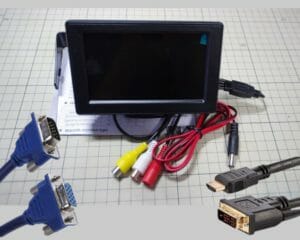Table of Contents
There are different types of monitor cables. The evolution of the monitor cable types began with the analog VGA cable, which only transmitted video signals. This industry has experienced change and improvement with the new cables coming with better features for improved monitor performance.
Among the features that have experienced significant improvement are the bandwidth range, latency levels, improved transfer speed, reverse compatibility, and many more. Monitor cables in the early days transmitted analog signals with low resolutions. Some of which only transmitted video signals. The more advanced modern ones transmit both digital video and audio signals. The likes of USB-C can even transmit power for charging.
With the increased popularity of LCD monitors, there has been an increased need for high-resolution monitor cables with a wide bandwidth range. You'll likely find several video interface port connectors on your monitor. But, do you know the correct cables for every port on your monitor?
Let's guide you on identifying the correct cables to connect to your computer monitor. Besides, we've simplified the hard tussle for you by listing each cable's key features and benefits. Read through for more.
What Are the Different Monitor Cable Types
The monitor cable types are listed below.
Video Graphics Array (VGA)
Digital Visual Interface (DVI)
High Definition Multimedia Interface (HDMI Cable)
DisplayPort (DP)
Universal Serial Bus (USB)
Thunderbolt
Composite
Component
Video Graphics Array (VGA Cable)
VGA is a display standard that uses analog technology to transmit a computer (source) signal to an external monitor.
Its output quality is low because VGA uses analog signals to transfer data. Its resolution also limits the VGA cable from displaying high-quality output. It is worth noting that the VGA cable only transmits video signals.
You can use the VGA connector to play video on your monitor. It allows you to stream video at 480 and 1080 pixels with the RGB signal.
We have the following types of VGA cables
- Standard VGA - Its bandwidth range is 14 MHz
- SVGA cables - Its bandwidth range is 27 MHz
- XGA cable - Its bandwidth range is 48 MHz
- SXGA cable - Its bandwidth range is 79 MHz
- UXGA cable - Its bandwidth range is 116 MHz
The VGA cable is compatible with D-sub cable, which is a small electrical connector having a D-shaped shield.
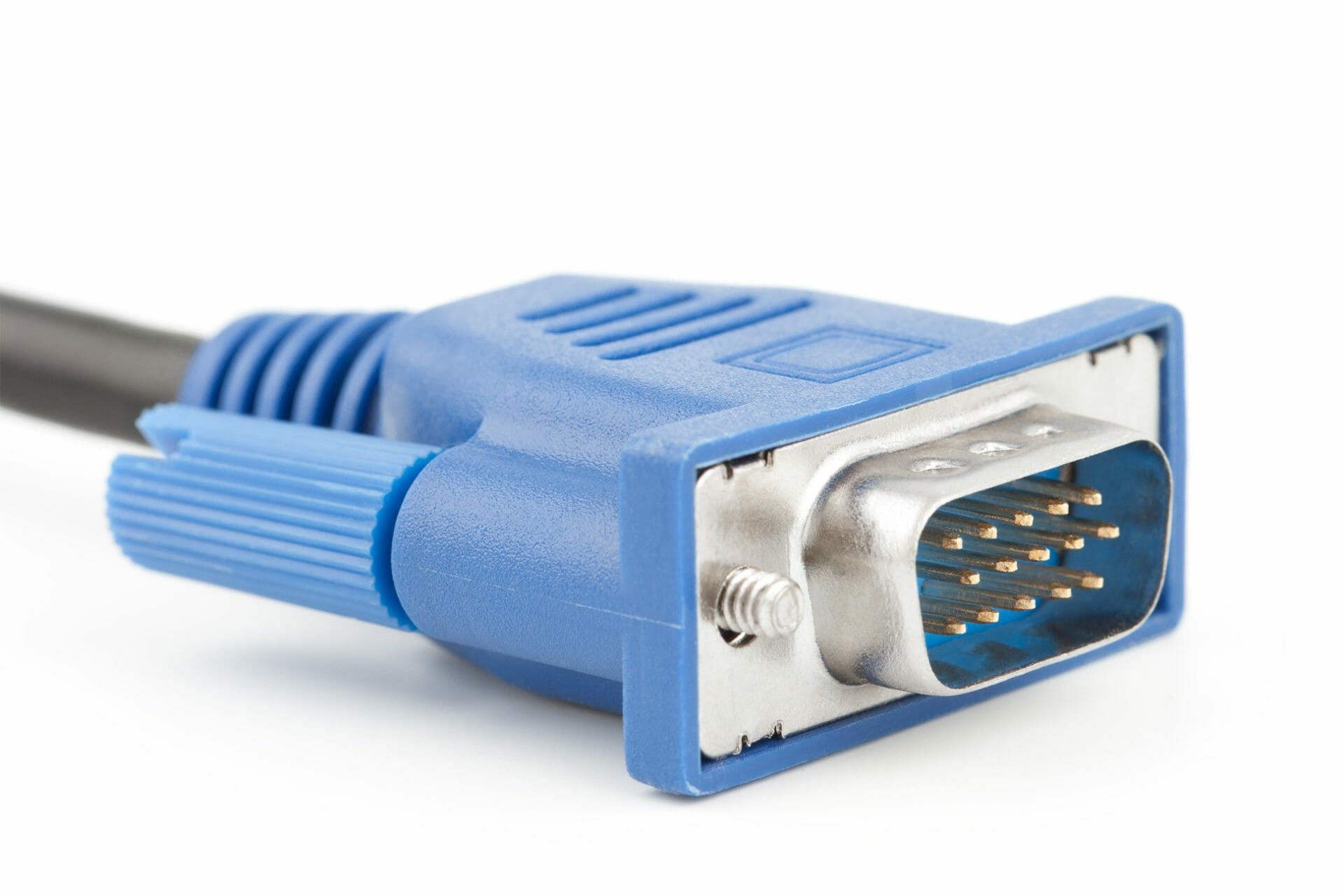
Digital Visual Interface (DVI)
DVI is a standard interface designed for higher resolutions transmission in an LCD monitor, video graphics cards, and projectors. It transmits uncompressed digital signals from the PC to the external monitor(LCD monitors). You'll mostly find this cable connection in video cards.
DVI cable transmits both signals digital and analog. Therefore, it's suited for all video transmission needs. It has both male and female connectors.
What are the DVI cable formats?
DVI has three formats listed below.
- DVI-D. This format transmits a digital signal only. This male connector is compatible with HDMI cables. Its single-link has 19 pins, while the dual-link has 25 pins.
- DVI-A. This format transmits the analog video signal only. It is compatible with VGA (your PC should have a VGA port).
- DVI-I. This format transmits analog and digital signals. It is a female connector. Single link DVI-I has 23 pins, while the dual-link has 29 pins.
Sigle-link DVI supports 1920 x 1200 display resolution at 60 Hertz refresh rate, while a dual-link DVI transmits 2560 x 1600 display resolution at 60 Hertz refresh rate.
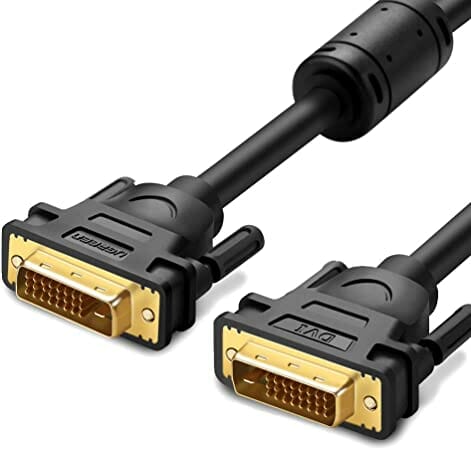
High Definition Multimedia Interface (HDMI)
HDMI cables are the interface that transmits HD quality video and audio signals from a PC to an external monitor. It was discovered by Video Electronics Standards Association (VESA). You can use the HDMI connecting cable to connect your PC to the monitor and other external devices. It transmits uncompressed signals.
HDMI connector has a high bandwidth range of up to 48.0 Gbps.
HDMI cable versions are listed below.
- HDMI 1.0 - Transmits 1080 pixels display resolution at 60 Hertz refresh rate. Its bandwidth range is 4.95 Gbps.
- HDMI 1.1 - Transmits 1080 pixels display resolution at 60 Hertz refresh rate. Its bandwidth range is 4.95 Gbps.
- HDMI 1.2 - Transmits 1080 pixels display resolution at 60 Hertz refresh rate. Its bandwidth range is 4.95 Gbps.
- HDMI 1.3 - Transmits 1440 pixels display resolution at 120 Hertz refresh rate. Its bandwidth range is 10.2 Gbps.
- HDMI 1.4 - Supports 4K display resolution at 60 Hertz refresh rate. Its bandwidth range is 10.2 Gbps.
- HDMI 2.0 - Supports 4K display resolution at 60 Hertz refresh rate. Its bandwidth range is 18.0 Gbps.
- HDMI 2.1 - Supports 10K display resolution at 120 Hertz refresh rate. Its bandwidth range is 48.0 Gbps.

DisplayPort (DP)
DisplayPort is a high-performance digital video interface that connects and transfers signals from a source computer to a monitor. The DisplayPort transmits both signals, video, and audio, using packetized data.
DisplayPort is a display interface with packetized data transmission. The interface is similar to the HDMI connector in the outwards appearance. It has a wide bandwidth of up to 80 Gbps (DisplayPort 2.0)
DisplayPort types include:
- DisplayPort 1.1 - Transmits 4K display resolution at 30 Hertz refresh rate and 2K resolution at 60 Hertz refresh rate. Its bandwidth range is 8.64 Gbps.
- DisplayPort 1.2 - Transmits signals at 4K maximum resolution at 60 Hertz refresh rate. Its bandwidth is 17.28 Gbps.
- Displayport 1.3 - Transmits 4K display resolution at 120 Hz refresh rate. Its bandwidth range is 25.92 Gbps.
- Display port 1.4 - Transmits 8k display resolution at 60 Hertz refresh rate. Its bandwidth range is 25.92 Gbps.
- DisplayPort 2.0 - Transmits 4K display resolution at 240 Hertz refresh rate. It can also support a 10K display resolution. Its bandwidth range is 80 Gbps.
- Mini Display Ports - Commonly used in laptop and iMacs connections.
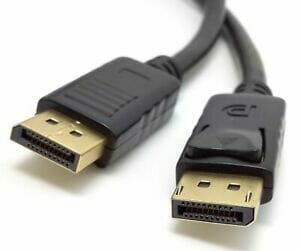
Universal Serial Bus (USB Cable)
Universal Serial Bus USB cables have become more common in our markets. You can use them to connect the PC with peripheral devices like mice and printers. They are also used for file transfer without forgetting their application in charging devices like phones. Their small size makes them compatible with small devices like laptops, tablets, and mobile devices. They are also easy to walk around with.
USB Types are listed below.
- USB Type-A. This cable is a one-way cable. One end has a larger pin, and the other has a smaller one. Plugin the end with the USB symbol written onto the PC's USB port and connect the other end to the peripheral device. USB-A 2.0 is used to charge smartphones and connect the mouse to the PC. On the other hand, USB-A 3.0 is wider and has a 5 GHz bandwidth range; hence it is suitable for data transmission.
- USB Type B. This cable is commonly used to connect large peripherals such as scanners and printers to the monitor.
- USB Type C. USB-C is widely used to charge devices through the USB ports and connect smartphones and PCs. This monitor cable allows a fast data transfer rate of 10 Gbps. It also transmits audio and video signals.
USB-C further has several versions, as listed below.
- USB 2.0 - It has a 480 Mbps bandwidth and a 2.5 W charge output.
- USB 3.2 Gen 1 - It has a 5Gbps bandwidth and a 4.5 W charge output.
- USB 3.2 Generation 2 - It has a 10 Gbps bandwidth and a 7.5 W charge output.
- USB 3.2 Gen 2x2 - It has a 20 Gbps bandwidth and a 15 W charge output.
- USB4 - It has a 40 Gbps bandwidth and a 100 W charge output.
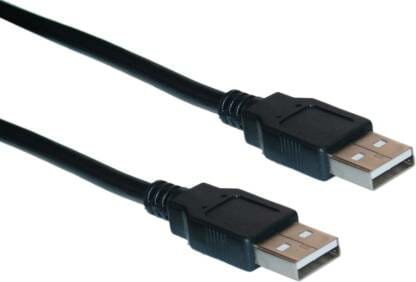
Thunderbolt
Thunderbolt is a standard interface used in Intel-based systems. It was established by Apple and uses thunderbolt technology. This cable has an improved data transfer rate due to its high bandwidth. You'll most likely come across Thunderbolt cable in iPads, iMac, or MacBook PCs.
The Thunderbolt cable transmits both audio and video signal. It also transmits data between devices.
Thunderbolt cable types are listed below.
- Thunderbolt 1 - This cable is compatible with Mini DisplayPort. It transmits 10 Gbps bandwidth over two lanes.
- Thunderbolt 2 - This cable is compatible with Mini DisplayPort. It has a 20 Gbps bandwidth range.
- Thunderbolt 3 - This cable is compatible with USB port Type C. It has a 40 Gbps bandwidth range.
- Thunderbolt 4 - This cable is compatible with USB-C. It has a 40 Gbps bandwidth range.
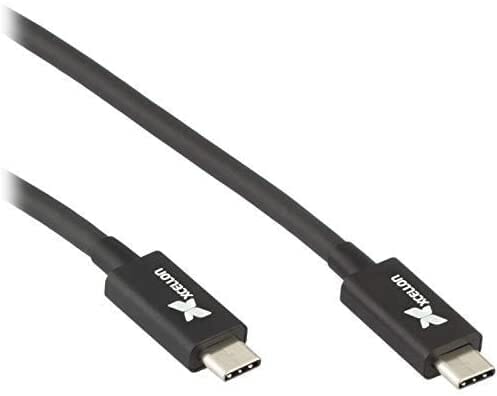
Component
The component is an audio interface used for analog audio transmission. They are not commonly used, but you'll see these cables on some monitors. It has three connectors; red, green, and blue. It has three pins together. You can use it to connect your monitor with DVD players.
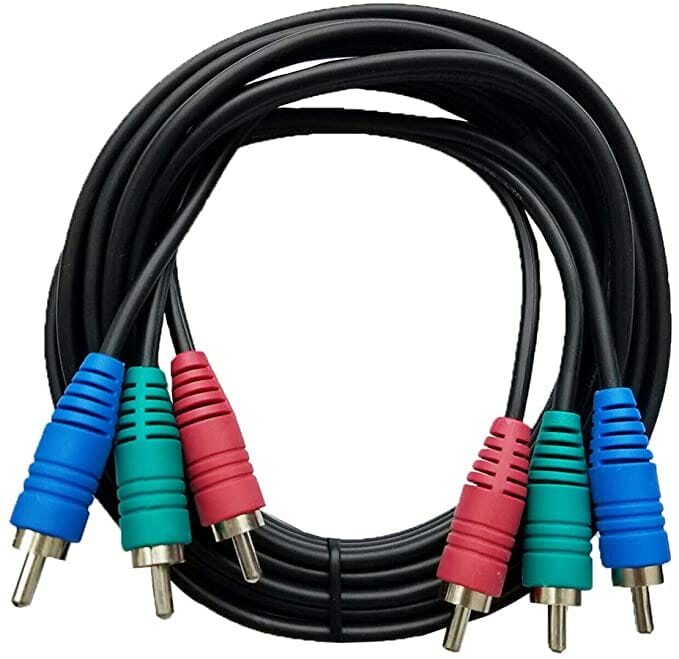
Composite
Composite is a set of three connectors used to transmit video signals between two devices. The cables are colored red, white, and yellow.
This cable only transmits analog video signals, meaning your videos will be limited to standard definition.
You can use this cable to connect ancient gaming consoles and set-top boxes.
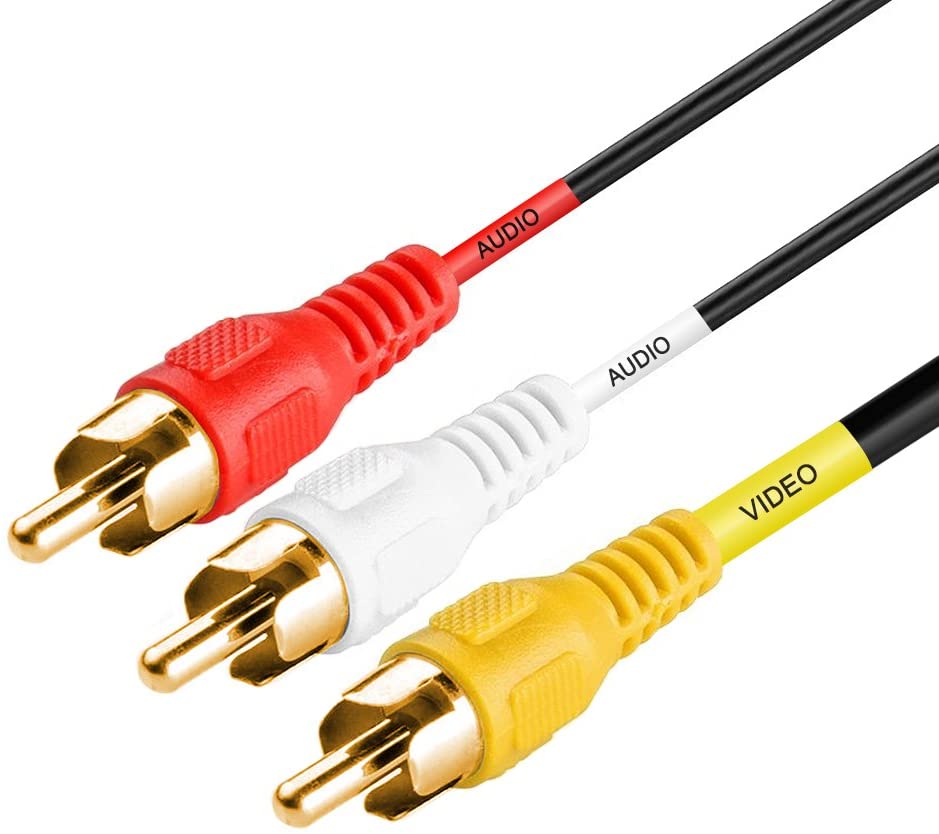
Does Monitor Cable Types Matter?
Yes, the monitor cable type matters. When selecting a cable to connect to your monitor, you'll need to consider the monitor ports you have on the monitor. The monitor ports on the primary computer will also dictate the cable types you use.
Another consideration is the bandwidth range. All the cables have different bandwidth ranges, and different applications have different bandwidths, screen resolution, and frame rates requirements. Ensure you select a cable with the right bandwidth for your use.
What Are the Best Monitor Cables for Gaming?
The best monitor cable type for gaming is the cable that is compatible with both your monitor and your gaming console or PC. However, to ensure top performance and the best gaming experience, it would be wise to go for a cable with a high bandwidth range. The cable should also support high display resolution and refresh rate.
If you are gaming on the latest consoles like Xbox Series X or PlayStation 5, you'll need to have HDMI 2.1 cable and a monitor with an HDMI port too. This cable has high bandwidth (48 Gbps) for the best gaming experience. It also supports a 4K display resolution at a 144 Hertz refresh rate, ideal for most fast-paced competitive games. The cable will also allow you to use eARC. It is still a great deal when gaming on a laptop or PC.
DisplayPort, version 2.0 in particular, is a killer when it comes to gaming. Its high 80 Gbps bandwidth is the real deal. Besides, it supports a 4K display resolution at 240 Hertz refresh rate. How on earth will a game lag with such features present?
However, if you're gaming on an older monitor, you can use the VGA or DVI cables. But, I recommend you go for the DVI as it transmits digital video signals, unlike VGA, which transmits analog video signals for video transmission only.
Types of Monitor Cable: New vs. Old
Older monitor cable types, such as VGA, only carry analog signals rather than digital ones, necessitating conversion both before and after transmission. Additionally, the resolutions and refresh rates that they support are constrained.
This also applies to older digital cable types like DVI and Component, which can only transmit video at a maximum resolution of 1080p (1,920 x 1,080). The majority can just send the visual signal and require an extra wire to handle the audio.
In contrast, more advanced connectors, such as HDMI 2.1 and DisplayPort, may send both audio and video over a single link. Additionally, they enable low frame rates at resolutions as high as 16K when employing Display Stream Compression, as well as high frame rates at 4K. They can also handle contemporary audio features like Dolby Atmos and contemporary visual standards like HDR.
Despite not having quite as much bandwidth as the most recent HDMI and DisplayPort standards, USB-C and Thunderbolt 3 and 4 are incredibly versatile because they can handle audio, video, high-speed data transmission, and in some cases, power transmission to connected portable devices, all through a single cable.
They are much more capable than any of the outdated monitor cable types that are still present on some legacy devices because they can even do it concurrently.
Conclusion
The different monitor cables have different bandwidth ranges and you may get no signal from computer to monitor for that matter. Besides, they are different when it comes to signal transmission. HDMI cable, especially the high-bandwidth HDMI 2.1 is, and DisplayPort 2.0, are best used for gaming.
On the other hand, USB-C is widely used for PC and smartphone connection and for charging devices. Thunderbolt, especially Thunderbolt 3, has fast data transfer and connects to the PC or monitor through the USB-C port. VGA cables and DVI are less preferred because their signals are analog.
FAQs
1. What kind of cables are used for monitors?
Due to its popularity and low cost, HDMI has become the de facto digital standard. The same cable can also serve as an audio connection for monitors with built-in speakers because it contains sound data as well. Although HDMI monitor wire types have 19 pins on each end, they are substantially smaller than VGA or DVI.
2. What’s better DVI or VGA?
Digital Visual Interface, or DVI, provides a noticeably crisper, better image than VGA. Because it can transport both digital and analog signals, it is a special connector. Other formats like HDMI and VGA are also simply convertible to DVI.
3. Which is better HDMI or DisplayPort?
Despite the fact that HDMI 2.1, which outperforms DisplayPort 1.4 in terms of capability, has been released, there are still few displays that support it. Several vendors unveiled HDMI 2.1 displays at CES 2021, so expect that to change soon.
4. Can VGA do 4K?
4K is not supported by older connectors like VGA and DVI connectors. 4K at 60 frames per second is supported via DisplayPort 1.2, HDMI 2.0, Thunderbolt 3, and some USB-C interfaces.
5. Should I use VGA or HDMI?
When comparing VGA vs HDMI for gaming, HDMI comes out on top. Greater resolutions, a higher refresh rate, HDR, and audio are all supported with HDMI. On the other side, 1080P at 60 Hz gaming on VGA is okay.

